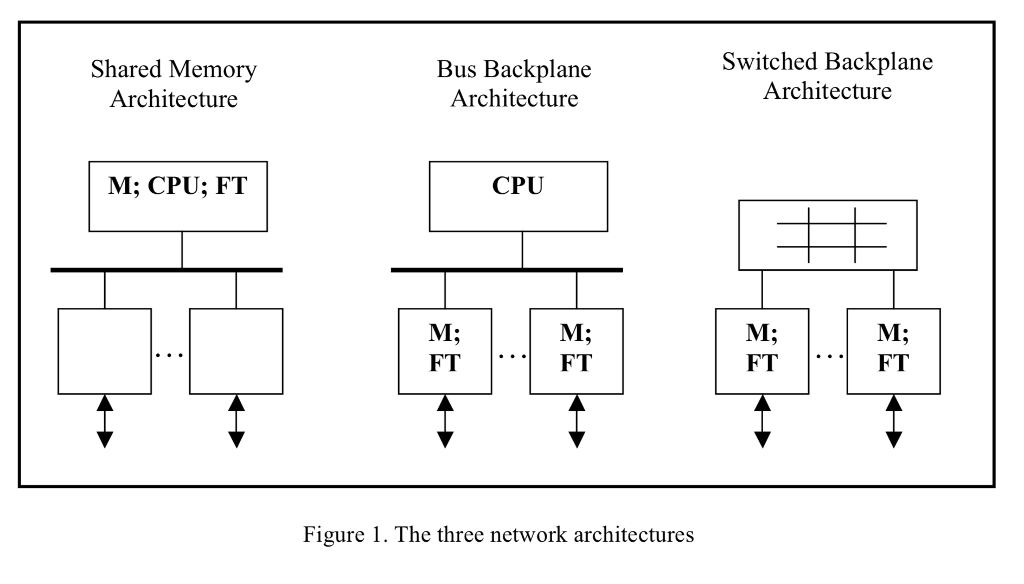Question
In this problem, we compare the throughput of three routers with different designs shown in figure 1. (a) Shared Memory Router: The memory speed enables
In this problem, we compare the throughput of three routers with different designs shown in figure 1.
(a) Shared Memory Router: The memory speed enables one read and one write every 5ns; the bus
rate is 200MHZ; the bus width is 32 bits.
(b) Bus Backplane Design: The bus rate and speed are as in (a). Each line card (input port) has a copy
of the forwarding table.
(c) Switched Backplane Design (i.e., cross-bar): The line cards use input buffers with the same memory technology as in (a) and a memory width of 32 bits. Assume that the head of line blocking limits the throughput of each line card to 25% of the rate of its connection to the backplane.
For each router design, determine the maximum average total rate of traffic that can flow across different line cards. Describe precisely how you define that rate and clarify the assumptions that you make. In particular, examine carefully how many times a given packet has to cross the bus in the first two designs. Also, be clear about how you count rates (do you add the input and output rate or not).

Shared Memory Architecture Bus Backplane Architecture Switched Backplane Architecture M; CPU; FT CPU M; FTFT M; FT FT M; M; Figure 1. The three network architectures Shared Memory Architecture Bus Backplane Architecture Switched Backplane Architecture M; CPU; FT CPU M; FTFT M; FT FT M; M; Figure 1. The three network architectures
Step by Step Solution
There are 3 Steps involved in it
Step: 1

Get Instant Access to Expert-Tailored Solutions
See step-by-step solutions with expert insights and AI powered tools for academic success
Step: 2

Step: 3

Ace Your Homework with AI
Get the answers you need in no time with our AI-driven, step-by-step assistance
Get Started


